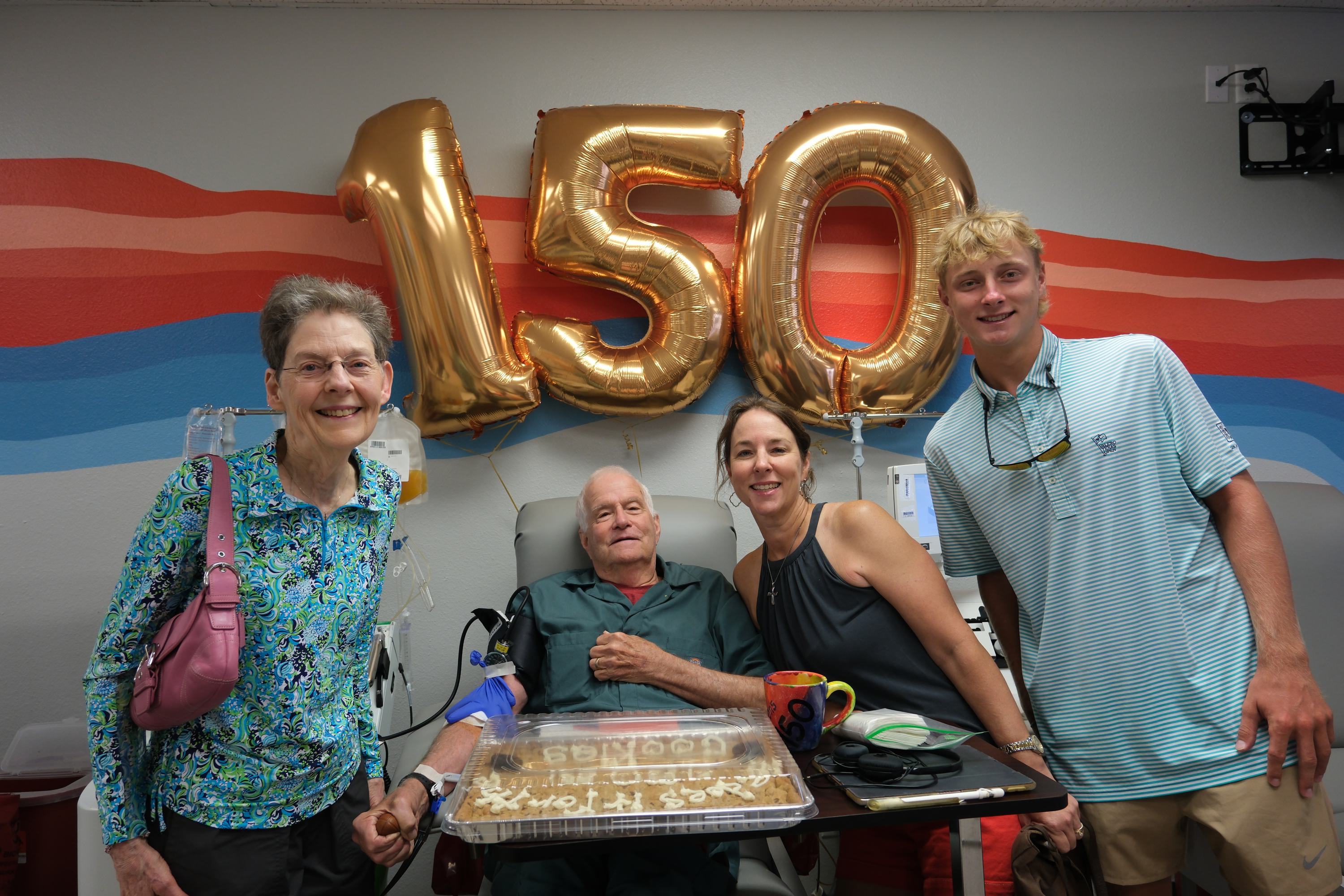According to the American Red Cross, someone in the US needs blood every two seconds. Think about that. Every single day in this nation alone, around 29,000 units of red blood cells are needed. A unit of blood amounts to about a pint, and the average visit to donate blood yields about three units.
Knowing that, it’s just about impossible to fathom how TLU alum Bruce Latour ’68 has managed to donate 150 gallons—not units, gallons—of blood. “Yes, I completed 150 gallons on July 14,” Latour said. That makes him the first donor in Travis County to reach that milestone at We Are Blood, the nonprofit blood center in Austin where Latour makes his donations.
“I started at We Are Blood in the fall of 1972—fifty-three years ago,” said Latour. “My first ten gallons were whole blood. I have donated 140 gallons of platelets. I donate platelets every two weeks.” Platelet donations are needed for patients with traumatic injuries or significant burns, as well as those undergoing cancer treatments, heart surgeries, and organ transplants. One of the factors that makes platelet donation so vital is that platelets, which are found in our blood and involved in clotting, have a very short shelf life—only around seven days—so a fresh supply is constantly required to meet the needs of the growing population of Central Texas.

One donation can help multiple patients—so imagine how many are helped by over a hundred gallons. Latour said he doesn’t know how many people he has helped, but Nick Canedo, vice president of community engagement at We Are Blood, has a sense of those numbers. “We are grateful to Bruce for his generous commitment to helping others as a platelet donor at We Are Blood,” said Canedo. “Hundreds of lives have been saved through his lifesaving donations.”
If you’re considering becoming a blood donor—whether you do it once or become a regular at your local blood center, Latour has a message that might lend some clarity. “Only a small percentage of people do this,” he said. And he’s right: Approximately three percent of the eligible US population donates blood each year. “Whole blood donations take only about an hour. For me, platelets take about three hours. Depending on my platelet count I spend about one-and-a-half to two hours on the machine.” That’s time well spent. “It's easy to get started and once one establishes the habit or routine it's easy to continue.”
Latour was surrounded by family when he reached the 150-gallon mark. His wife Fran (Sonntag), class of ’69, was by his side along with their daughter, Anne Hiller, class of ’97, and one of their grandsons. “It brings me to tears,” Hiller said of her dad’s generosity. “I’m just so proud of him for being so committed to doing something that means so much to so many.”
